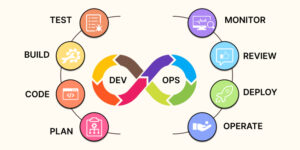
Organizations need datasets to improve business efficiency, fraud detection, and risk management. However, it is challenging to get the full value of the data. In such a scenario, data strategy comes in handy. There are a lot of processes involved in data strategy, and engineers play a crucial role in planning and implementing a robust data strategy.
A successful data strategy outlines data collection, storage, sharing, and usage to help business owners make an informed decision. If you want to learn about data strategy in detail, then keep reading this post. Here, we will walk you through the entire process and provide you with valuable insights into the data strategy in an easy-to-understand way. Let’s dive in…
Table of Content
- What is Data Strategy
- Why Is Data Strategy Important?
- How Can You Build a Data Strategy?
- Step 1: Assessment of the Existing Data Landscape
- Step 2: Define Clear and Measurable Goals
- Step 3: Form Data Governance Regulations
- Step 4: Design the Data Architecture
- Step 5: Create a Comprehensive Data Quality Management
- Step 6: Deploy Data Analytics
- Step 7: Implement Data Security Measures
- Step 8: Continuous Improvements in Data Strategy
- What Are the Advantages of Building Data Strategy?
- Consistent Data Management
- Helps Make Informed Decisions
- Improve Customer Experience
- Solve Data Management Challenges
- Improves Operational Efficiency
- Foster an Organization-Wide Data Culture
- Build AI and ML Algorithms
- Cost-Saving Benefits
- Supports Legal Compliance
- Fosters Innovation
- Key Components to Consider When Building a Data Strategy
- Who Builds a Data Strategy?
- The Bottom Line
What is Data Strategy?
Data plays a crucial role when it comes to making informed business decisions. When we say data, it has to be organized strategically to ensure it serves the organization’s interests effectively. Currently, all types of businesses (be they startups or MNCs) rely on data. They collect large amounts of data from various sources.
However, they need organized data to make informed decisions and create machine-learning applications. Data strategy comes in handy here. A data strategy is a long-term plan for achieving business objectives. An effective data strategy includes the technologies, processes, resources, people, and guidance required for data collection, storage, management, analysis, and sharing. Let’s understand what your data strategy framework should include:
- Processes: These include ways for collecting, sharing, managing, and analyzing data so that high-quality data can be used to attain business goals.
- IT infrastructure: Includes a comprehensive plan for intelligent tools, cloud storage, databases, and advanced analytics metrics to accelerate business productivity.
- Resources and People: This includes people and other resources that will be required to implement the strategy. It mainly consists of descriptions of training programs that should be conducted to enhance the stakeholders’ expertise.
- Guidelines: These include instructions for employees on how data should be used to satisfy consumers and enhance the brand’s value.
- Data Recovery Plan: A data recovery plan is also formed in order to protect sensitive information against cyber threats, breaches, and unauthorized access.
- Data Security Compliance: It ensures that the strategy that is designed complies with local laws and industry regulations.
Now the question is, why is data strategy important? Read the next section to understand why data strategy is important. Here we go…
Why Is Data Strategy Important?
Data is everything in today’s business scenario. Every business needs reliable and organized data to improve operational efficiency. Businesses gather data from several sources. However, not every data is useful. Manually processing vast amounts of data can be very challenging and time-consuming for businesses.
Data strategy is one such procedure that helps organizations have systematized datasets. Organizations that want a competitive advantage always build a data strategy. Doing so helps them stay informed and competitive. An effective data strategy offers guidelines for managing and using data. This way, they can make better and faster decisions and use the data to its fullest potential. It improves their business’ year-to-year revenue and improves customer satisfaction.
So, how to build a data strategy? Read ahead to know…
How Can You Build a Data Strategy?
Data helps businesses to determine the cause of problems more effectively, gain an in-depth understanding of what is happening in different locations, departments, and systems, and so on. A well-crafted data strategy ensures the use of the data to its highest potential. It requires a comprehensive reflective assessment, persuasive storytelling, problem-solving skills, critical thinking, and informed decision-making. Take a look at the following steps to learn how to build an effective data structure. Here we go…
Step 1: Assessment of the Existing Data Landscape
The first and most important step is to do a thorough and minute evaluation of the organization’s current data landscape, opportunities, and potential challenges. Understanding the ins and outs of the existing data structure allows businesses to have a clear picture of the requirements and highlights key areas for improvement.
Step 2: Define Clear and Measurable Goals
Next, you should define clear and measurable business objectives that can align with the data framework. This way, organizations can achieve analytical maturity that can help them attain predetermined optimal results.
Step 3: Form Data Governance Regulations
Creating a comprehensive data governance framework is essential to ensure data security and integrity. It should include policies, standards, and legal regulations for efficient data management. This way, the organization can easily determine the roles and responsibilities of stakeholders for various aspects of data management, ensuring secure and consistent data handling across the business.
Step 4: Design the Data Architecture
A well-designed data architecture should include the right data storage solutions, data integration processes, and data transmission mechanisms. Having these in place can help businesses have high-quality data essential for analytic insights. Besides this, it ensures an accessible and scalable data solution for seamless business operations.
Step 5: Create a Comprehensive Data Quality Management
An organization should develop a structured data quality management framework that includes data profiling, quality control metrics, reflective assessments, data cleansing, validation, standardization, and integration processes. Aside from that, it also includes real-time data monitoring to promote the accuracy and reliability of data solutions. Having comprehensive data quality management practices in place makes it easier for businesses to make informed decisions.
Step 6: Deploy Data Analytics
Data analytics deployment is another crucial stage that ensures the integration of machine learning into a production environment. It makes data flexible, adaptable, and secure. This way, business organizations can generate valuable insights to make strategic decisions.
Step 7: Implement Data Security Measures
Compliance with data protection regulations ensures the implementation of robust security measures, protecting sensitive data from unauthorized access, cyber threats, and breaches.
Step 8: Continuous Improvements in Data Strategy
A data strategy is a dynamic process. It requires constant and consistent monitoring and improvement. Organizations should regularly update data management practices to make them scalable to changing market trends, business needs, and technological advancements. It ensures operational efficiency, business optimization, faster decision-making, and improved customer satisfaction.
Let’s now take a look at the advantages of building a robust data strategy. Here we go…
What Are the Advantages of Building Data Strategy?
This era is of cut-throat competition. Having cutting-edge solutions is essential for businesses to stand out. Most organizations are willing to multiply their business productivity with generative AI models and other cutting-edge technological tools. Before moving forward with technological advancement, they should have a clear data plan aligning with their business goals. Doing so allows them to choose the best AI or other digital solutions. So, data strategy is very beneficial for all businesses (irrespective of their sizes and types). Here are the benefits that a business can enjoy by building a robust data strategy. Read on!
1. Consistent Data Management:
An effective data strategy supports constant and consistent data management. It typically answers five questions:
- Which data set is appropriate?
- What is the purpose of data collection, storage, management, and analysis?
- How to control data quality?
- Which security measures should be implemented to ensure data security and integrity?
- What data integration operations should be used to ensure smooth and seamless data processing and transmission?
2. Helps Make Informed Decisions:
Making informed decisions is crucial for the success of a business. A wrong decision can lead to disaster. To avoid this, building a data strategy becomes inevitable. A high-quality data strategy helps business owners understand market trends, consumer preferences, and forecasted business growth.
3. Improve Customer Experience:
Today’s customers are no ordinary customers. If businesses really want to grow or survive the competition, then prioritizing customers is vital for them. That’s the reason modern organizations put their customers first. A comprehensive data strategy comes in handy in such a situation.
They use this data to analyze their customers’ sentiments to meet their needs proactively. High-quality data analytics also aid them in delivering personalized products that can align with their customers’ goals. Positive customer experience not only helps businesses drive growth and increase revenue, but it also helps them retain their customers.
4. Solve Data Management Challenges:
Business owners often face various data management challenges, including data redundancy, potential threats to security, improper data architecture, poor analysis reports, etc. In such a situation, building and implementing a good data strategy becomes crucial. It helps organizations streamline these challenges by making data accessible and data transmission secure.
5. Improves Operational Efficiency:
Building a robust data strategy helps businesses optimize resources, reduce costs, and attain better business outcomes. With the help of data management, businesses can streamline their processes and enhance operational efficiency effectively.
6. Foster an Organization-Wide Data Culture:
A data strategy presents a blueprint to improve data literacy and efficiency. Employees learn about a reliable and productive data framework. This helps them enhance data quality and privacy. In addition, business owners organize the best training and development programs for their employees to make them efficient in building a proper data architecture.
7. Build AI and ML Algorithms:
Both Artificial Intelligence and Machine Learning (ML) are in the mainstream these days. The functionalities of artificial intelligence and machine learning algorithms depend on high-quality data strategy. Data analysts train AI models with massive amounts of reliable data to make them efficient for image recognition, forecasting, intelligent search, etc.
8. Cost-Saving Benefits:
Data redundancy often increases the costs of data storage, processing, and management. However, an effective data strategy eliminates data redundancy, decreases the possibility of errors and lowers the storage space requirement. This way, it reduces cost and makes the process less resource-intensive.
9. Supports Legal Compliance:
An effective data strategy implements robust security measures to limit unauthorized access. The framework includes data governance rules and regulations, ensuring everyone knows how to maintain data privacy, security and integrity. This way, it builds the trust of customers and stakeholders.
10. Fosters Innovation:
A well-structured data strategy encourages employees to go beyond possibilities and explore new opportunities. This fuels them to research and innovate. They learn emerging market trends and customers’ goals to develop new products and drive sustainable business growth.
Key Components to Consider When Building a Data Strategy
Creating a comprehensive data strategy is a challenging task. It requires critical thinking, in-depth data analysis, creative decision-making and more. Hence, understanding the key components of a data strategy is vital to ensure that the whole process complies with standards and regulations. Here are the key components required for building a comprehensive data strategy. Take a look…
- Data Catalog Tools: Data catalog tools help to identify and categorize existing data landscapes. This aids organizations in training artificial intelligence and machine learning models, ensuring improved operational efficiency.
- Data Management Tools: Many tools exist for data validation, standardization, acquisition, storage, and protection. These data management tools ensure an effective data strategy that perfectly aligns with business objectives, ensuring compliance with regulations.
- Data Governance: The data governance framework determines the rules and regulations for data management. It helps ensure data quality, privacy, and security. Overall, it enhances stakeholders’ and customers’ trust, focusing on accuracy and reliability.
- Data Architecture: A well-structured data architecture is considered scalable and flexible to adapt to the evolving needs of organizations for efficient data management.
- Data Integration: Data integration enables better analytics practices and operational efficiency within an organization. Data scientists follow essential steps like data consolidation, extraction, transformation, and loading to ensure a seamless integration. Consequently, they get a unified view of the collected data from multiple sources.
- Data Analytics: A successful data strategy provides high-quality analytics insights to eliminate bias. Consequently, it ensures no errors and bugs in the inputs used for training AI and ML models.
- Data Security: Data security ensures business organizations comply with privacy regulations to safeguard sensitive information. It should consist of end-to-end encrypted data, access controls, and regular security audits to assess vulnerabilities in the initial stage. It allows data scientists to take a proactive approach to eliminate the potential threat of cybercrime.
- Review Process: In addition, a comprehensive data strategy should comprise a review process to analyze and improve existing data management systems. This should include periodic data auditing, validation, and quality monitoring.
Who Builds a Data Strategy?
The following people come together to build a data strategy:
- Data Engineers: Data engineers build and maintain the technical infrastructure for data collection, storage, and management. They define a comprehensive data plan to help an organization achieve a business objective.
- Data Scientists: Data scientists use the processed data for further analysis to create different AI and ML models. They empower organizations to make informed decisions.
- Data Analysts: Data analysts use their expertise in analyzing and interpreting datasets. They work closely with data engineers and scientists to ensure their analytics reports align with the operational requirements.
- Business Managers: Business managers review comprehensive data reports, ensuring improved operational efficiency, informed decision-making, better customer satisfaction, and increased revenue.
The Bottom Line
So, this is all about data strategy. Hopefully, this article has been informative for you. All in all, a robust data strategy is the cornerstone of successful data-driven decision-making in today’s digital landscape. It helps review the existing data infrastructure, analyze the gaps, and achieve objectives. It aligns an organization’s goals with actionable insights obtained from data, promoting efficiency, innovation, and a competitive edge.
By concentrating on key components such as security, governance, technology, data architecture, data quality, and data integration, businesses can fully leverage their data assets. An effective data strategy not only enhances operational efficiency but also enables businesses to foresee trends, adjust to changes, and maintain growth in a constantly shifting market.






